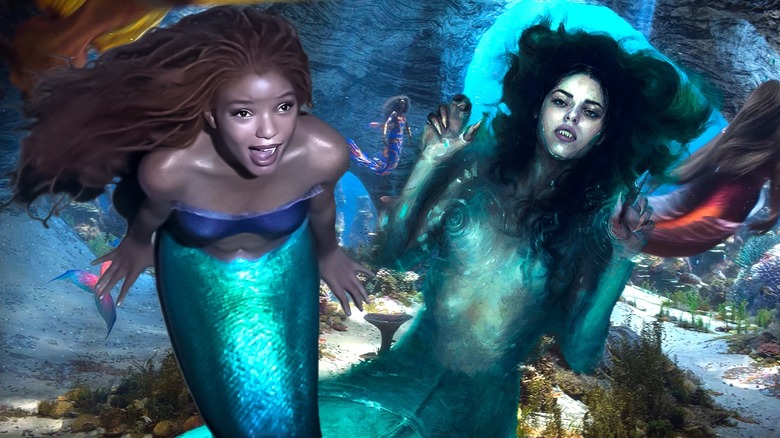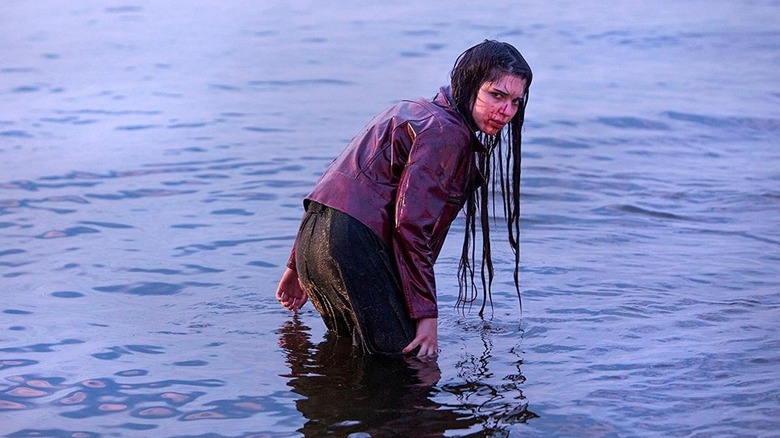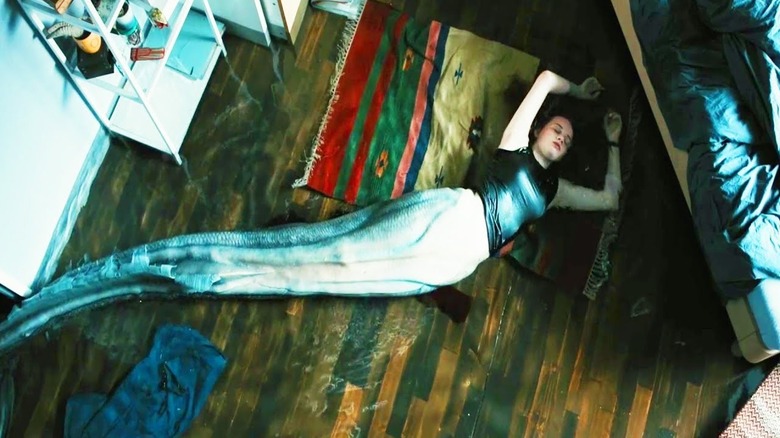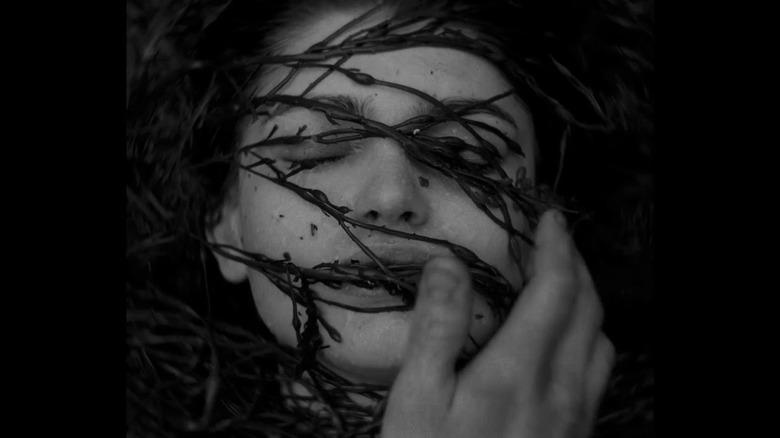Forget The Little Mermaid: Mermaids Are Terrifying, Despite What Disney Movies Say
Most of the well-known mermaid films are romantic and upbeat, from the tween fantasy "Aquamarine" to Disney's revolutionary animated feature "The Little Mermaid" (which will be reimagined as a live-action movie in May), and the sex comedy "Splash" where Tom Hanks meets a beautiful mermaid who also happens to be the girl of his dreams. But mermaids can also be a nightmare.
In Greek mythology, mermaids — also known as sirens — are half-human, half-sea creatures who are mysterious and inquisitive, but also deceitful. According to folklore from around the world, female mermaids are harborers of doom. They use their bewitching singing voices to hypnotize male sailors and lure them to a watery death. In Homer's "Odyssey," Odysseus forces his men to fill their ears with wax so that they are not tempted by a mermaid's enchanting song.
Their liminal existence between the sea and shore often brings violence and conflict, not happily ever afters. In ancient stories, mermaids frequently play a dangerous role in storms and shipwrecks. Even Hans Christian Andersen's "The Little Mermaid" has a brutal background that the Disney adaptation ignores. The little mermaid has her tongue cut out and dissolves into sea foam instead of saving herself by stabbing the prince through the heart and smearing his blood on her legs. In cinema, the horror genre highlights the darker elements of mermaid folklore.
The Lure
Part body horror and part rock opera, Agnieszka Smoczynska's "The Lure" is a chilling yet poignant representation of the mermaid/siren figure. The film is a twisted version of "The Little Mermaid" fairy tale that highlights the erotic and disturbing undertones of mermaid mythology.
Set in 1980s Poland, "The Lure" focuses on two mermaid sisters, Silver and Golden, who are just as alluring as they are deadly. The girls enter the human world and use their dulcet singing voices to perform sexy cabaret numbers. Their seductive song ends with them sitting topless as mermaids in a giant champagne glass. They are a beautiful, one-of-a-kind musical duo that the audience falls in love with.
Smoczynska makes the mermaids' conflict between the human world and the ocean feel fresh and exciting. Silver's obsessive crush on one of the band's musicians leads to a terrifying sequence of bloody body horror where she has surgery to remove her tail and get human legs. The mermaids also use a silent, sonar-like method of communication that is subtitled.
Silver and Golden are some of the most scary mermaids ever seen on screen. They have sharp teeth that bite and chew chunks of flesh from men's bodies. They devour these men with a famished glee, taking revenge on their cruel misogyny. Smoczynska's "The Lure" is an audacious film that combines grisly violence and unsettling images with bright colors and glittery music numbers. It's a truly unique viewing experience.
Blue My Mind
Lisa Brühlmann's "Blue My Mind" uses mermaid folklore to depict ordinary adolescent drama, specifically the unpredictable changes of puberty for a 15-year-old girl named Mia. It's a much darker version of the Disney Channel Original Movie "The Thirteenth Year," about a boy who transforms into a merman on his 13th birthday. Through disturbing images of body horror, "Blue My Mind" captures how harrowing it can be for young girls to make that transition from childhood to adulthood.
When Mia moves to a new town, she faces pressure to fit in with the popular girls — a rebellious group who dabbles in drugs, partying, erotic asphyxiation, and hooking up older guys. At the same time, Mia must hide terrifying body changes where her toes start webbing together, black scales form on her legs, and she has a sudden, ravenous hunger for fish. This transformation builds slowly, creating a dreadful atmosphere that deftly captures the loneliness and desperation to fit in as a teenager.
"Blue My Mind" uses the erotic connotations of the mermaid legend to interpret Mia's coming of age as an object of sexual desire. By hanging out with her new friends, Mia feels intense pressure to dive into sexual relationships with men before she is ready (most of whom take advantage of her) and create a traditionally feminine, seductive identity.
Her final transformation into a mermaid is visceral and gripping. "Blue My Mind" elevates typical teenage conflicts with the mermaid figure to study how difficult it is for young women to find their place in the world, understand their bodies, and harness their female power.
The Lighthouse
The rocky island setting of Robert Eggers' perverted Gothic horror film "The Lighthouse" is the perfect setting for an eerie depiction of mermaids. Eggers' film centers on two 19th-century lighthouse keepers who, to quote /Film's Quarantine Stream piece on "The Lighthouse," "descend into a booze-soaked frenzy of sexual frustration and isolation-induced insanity." Drenched in stark black and white visuals, a mermaid appears briefly in "The Lighthouse" but her seductive power is very significant to the story.
After a major storm, a young, mustached lighthouse keeper named Winslow is inexplicably drawn to the inky sea illuminated by a thin sliver of the moon. Winslow cannot take his eyes off the churning water, sinking in slowly with wide eyes to a high-pitched sound. The next morning, he discovers a mermaid washed up on the shore. He wipes away the thorny sea bramble to reveal her breasts, then discovers her fishy lower half. Eggers' tight close-up on the mermaid's wailing face as she smirks and lets out a piercing scream is very spooky, placing the audience in Winslow's frightened shoes and demonstrating her sinister power.
As an erotic and mysterious creature, the mermaid serves as a manifestation of Winslow's growing delirium and sexual repression. Later in the film, Winslow keeps a mermaid figurine and uses it to furiously masturbate. While he fantasizes about having sex with the mermaid, Eggers inserts a bizarre montage of slick tentacles and slippery fish parts with close-ups of the mermaid's vagina modeled after shark genitals in the center of her tail. The movie's dark use of the mythical mermaid adds to its hallucinatory atmosphere.



